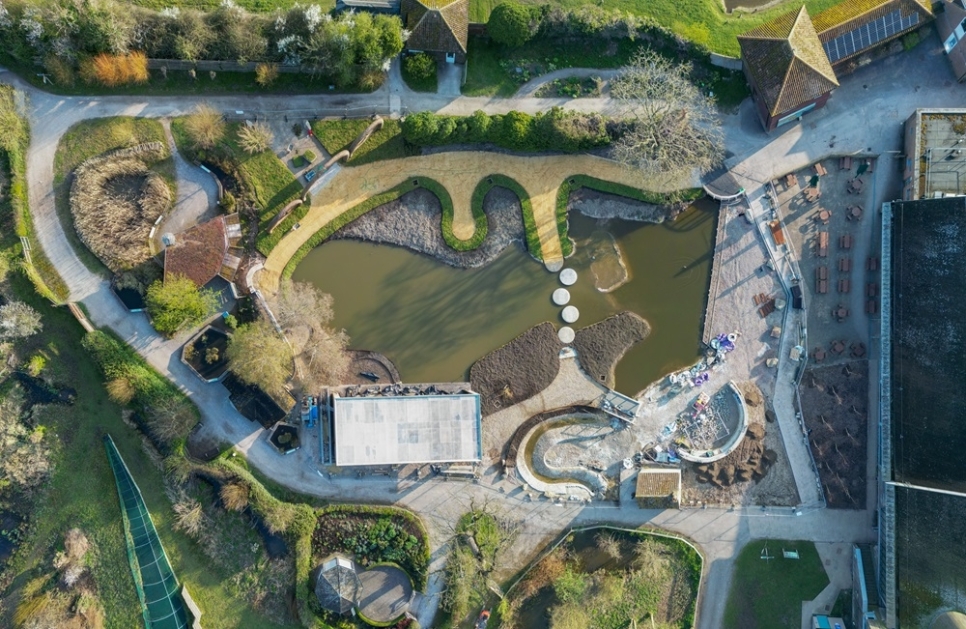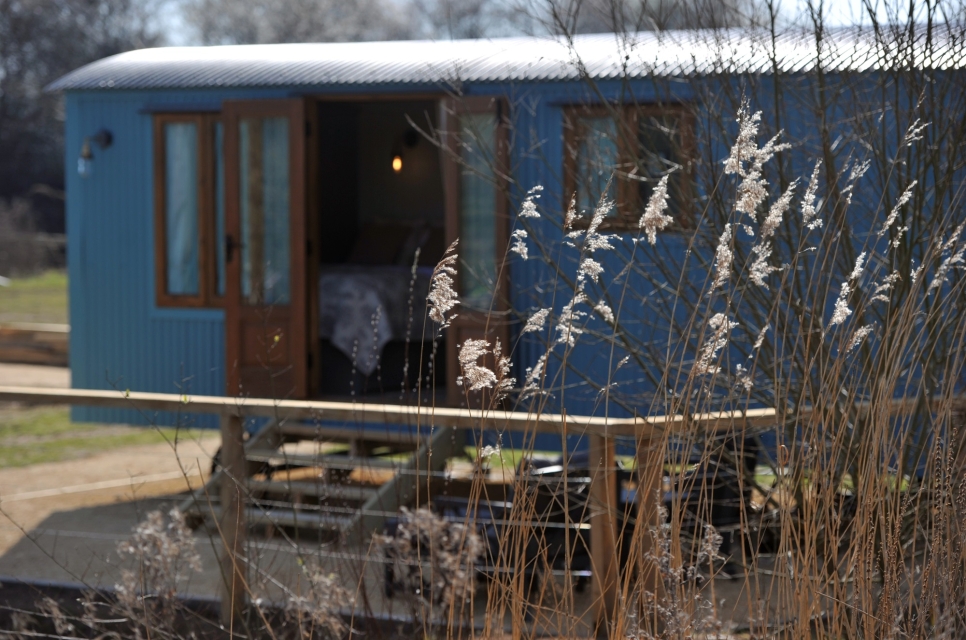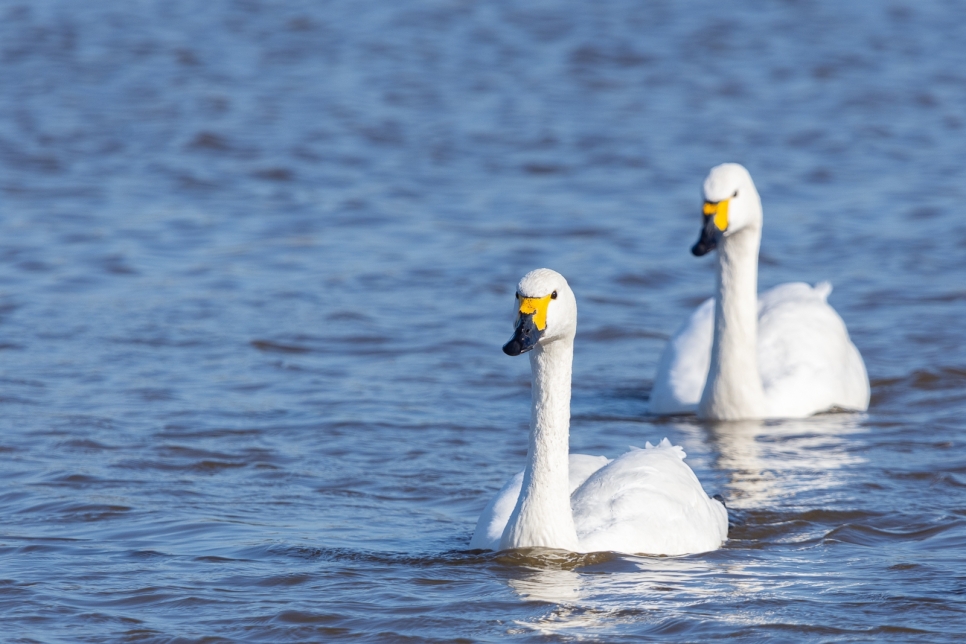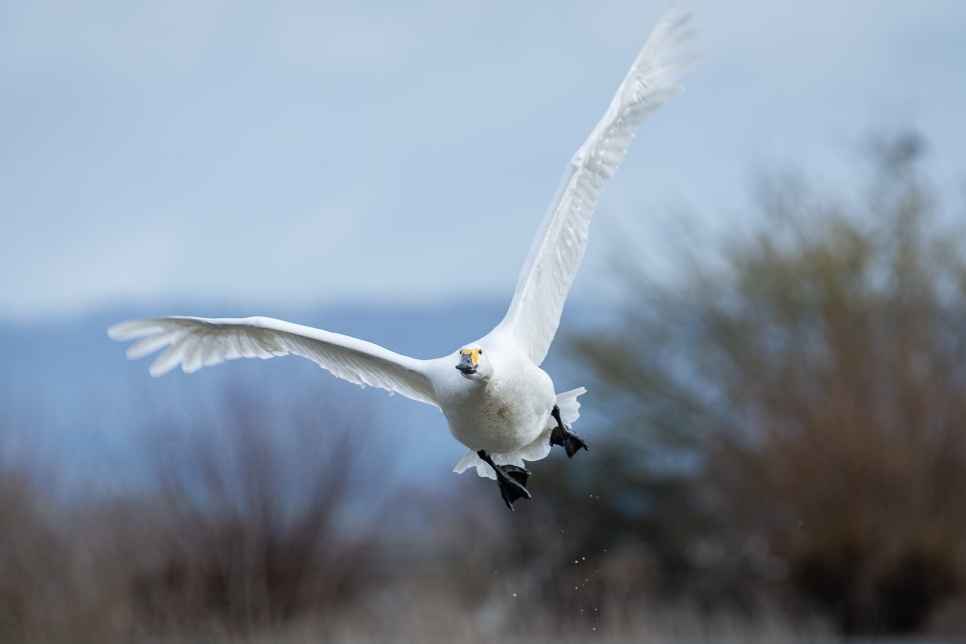Mission Possible exhibit - now open!
Aloha! The new ‘Mission Possible’ exhibit has opened at Slimbridge. This exciting and immersive new exhibit brings to life WWT’s worldwide conservation work.
Aloha! The new ‘Mission Possible’ exhibit has opened at Slimbridge. This exciting and immersive new exhibit brings to life WWT’s worldwide conservation work. Here, visitors can learn all about how WWT saves wetlands and the species that call them home - this often involves making the impossible, possible!
In 1979 WWT founder, Sir Peter Scott released 200 nēnēs – the world’s rarest goose - on the island of Maui, their native home. With all the best grassland having disappeared for farming, the only nēnēs that survived lived on golf courses, where they fed on the rich grasses. The new Mission Possible exhibit recreates this Hawaiian landscape and even includes a golf course and golf club house that visitors can explore. Visitors can hand-feed the nēnēs and discover how Sir Peter Scott developed ground-breaking techniques to breed them and rescue them from the brink of extinction.

Nēnēs at Mission Possible - credit Phoebe Vaughan
During the 1950s the Hawaiian goose – fondly known in Hawaii as ‘nēnē’ for their ‘nay-nay’ murmur, was close to extinction due to the introduction of predators and the loss of habitat in Hawaii.
There were only 30 nēnēs left, so Sir Peter Scott had 3 birds sent to Slimbridge for breeding where he pioneered the first ever captive breeding project for nēnēs. WWT began to successfully breed the nēnēs in captivity and release them back into the wild, the world population is now 3,000. The nēnēs population remains vulnerable and still relies on regular releases of captive-bred birds.

Nēnēs outside the golf club house - credit Amy Alsop
Within Mission Possible visitors can also peek behind the scenes by visiting the duckery and see eggs and ducklings being raised within rearing tanks and enclosures. Visitors can discover the ground-breaking techniques pioneered by Sir Peter Scott that still form the basis of WWT’s breeding programmes around the world.
At Mission Possible visitors can also explore the amazing work WWT is delivering to save other endangered species such as the Madagascar pochard. WWT uses modern techniques and technology to raise these birds and is working with local communities to restore a remote Madagascar lake for them to return to the wild. This is challenging work in some of the remotest places on earth.
Exhibit Engagers are on hand at Mission Possible to answer any questions visitors have and help bring this new exhibit and WWT’s conservation stories to life.
Mission Possible is now open, all visitors must pre-book admission to Slimbridge before visiting.
Header image - credit Amy Alsop



